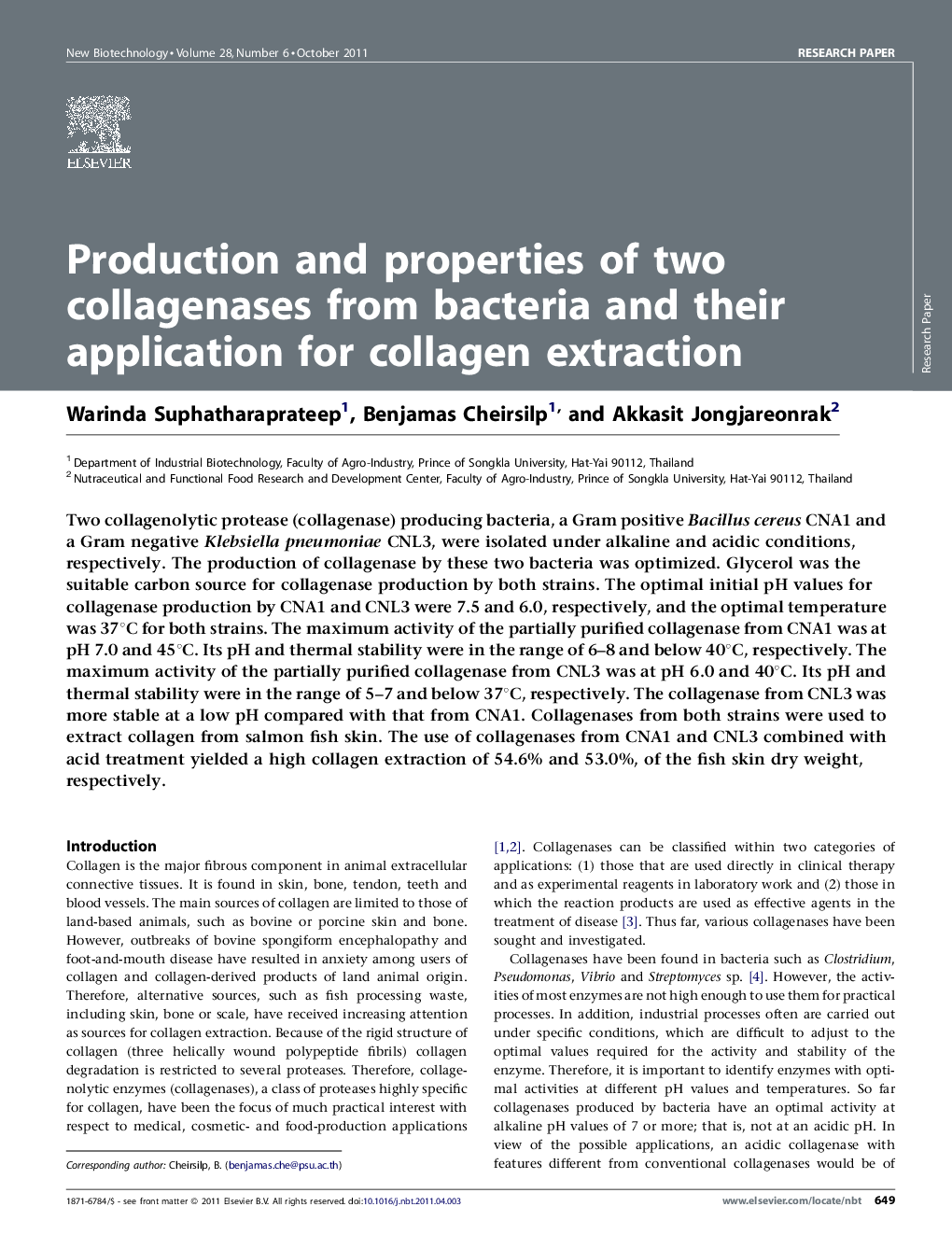| کد مقاله | کد نشریه | سال انتشار | مقاله انگلیسی | نسخه تمام متن |
|---|---|---|---|---|
| 33477 | 44980 | 2011 | 7 صفحه PDF | دانلود رایگان |

Two collagenolytic protease (collagenase) producing bacteria, a Gram positive Bacillus cereus CNA1 and a Gram negative Klebsiella pneumoniae CNL3, were isolated under alkaline and acidic conditions, respectively. The production of collagenase by these two bacteria was optimized. Glycerol was the suitable carbon source for collagenase production by both strains. The optimal initial pH values for collagenase production by CNA1 and CNL3 were 7.5 and 6.0, respectively, and the optimal temperature was 37°C for both strains. The maximum activity of the partially purified collagenase from CNA1 was at pH 7.0 and 45°C. Its pH and thermal stability were in the range of 6–8 and below 40°C, respectively. The maximum activity of the partially purified collagenase from CNL3 was at pH 6.0 and 40°C. Its pH and thermal stability were in the range of 5–7 and below 37°C, respectively. The collagenase from CNL3 was more stable at a low pH compared with that from CNA1. Collagenases from both strains were used to extract collagen from salmon fish skin. The use of collagenases from CNA1 and CNL3 combined with acid treatment yielded a high collagen extraction of 54.6% and 53.0%, of the fish skin dry weight, respectively.
Journal: New Biotechnology - Volume 28, Issue 6, October 2011, Pages 649–655